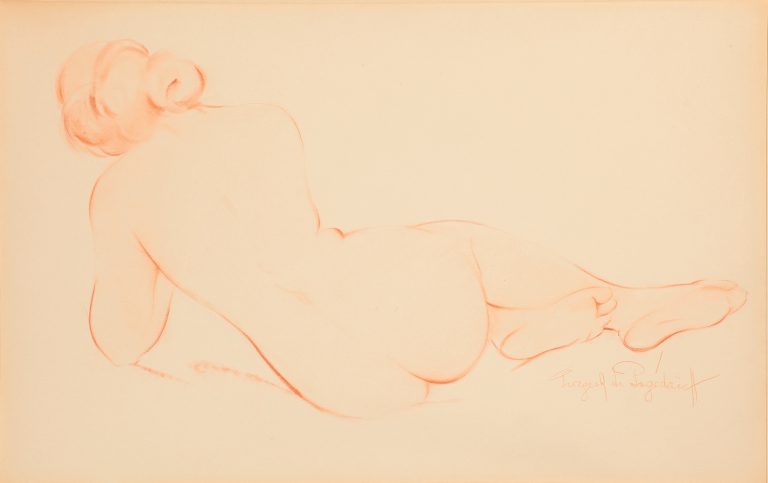Biography
Georges de Pogedaieff was a Russian painter, graphic artist and stage designer. He was born in 1894 in the Pozhedayevka estate, Kursk Province, to a noble family descending from the Godunovs.
In 1915 Pogedaieff entered the Moscow School of Painting, Sculpture and Architecture and in 1916 enrolled in the Imperial Academy of Arts. In 1918 he began to work as a stage designer in Petrograd.
In 1920 Pogedaieff emigrated to Romania where he worked as a stage designer at the National Theatre in Bucharest. He had a personal exposition at the First Bessarabian Exhibition of Painting and Sculpture in Bucharest (1920-1921). Then he moved to Prague where he designed sceneries for Anna Pavlova’s company.
In 1921-1924 Pogedaieff lived in Berlin and designed performances for Boris Romanov’s Russian Romantic Theatre, including The Sad Princess and The Queen of Spades. He also produced stage designs for Prince Igor, Cyrano de Bergerac, Electra, Macbeth and Turandot.
In 1925 Pogedaieff settled in Paris where he worked for Nikita Baliyev’s The Bat Theatre. In 1930 he worked as a designer at the End of the World science fiction film by Abel Gance and in 1931 designed scenery and costumes for Valentin Kataev’s Squaring the Circle at Charles Dullin’s Théâtre de l’Atelier.
In 1935 Pogedaieff had a personal exhibition in Cannes where he displayed portraits of writers and artists he met in Paris (including those of Ivan Bunin and Vladimir Smolensky). The same year he took part in the exhibition of the Russian art in London (1 Belgrave Square), which was organised to support the Russian Red Cross.
In 1937 Pogedaieff gave up stage design. He painted views of Paris and Provence and still lifes and created graphic portraits. He stayed in Paris during the German occupation of the city in 1940-1945.
Pogedaieff worked a lot in the area of book illustration and produced illustrations for the books by Nikolai Gogol, Alexander Pushkin, Mikhail Lermontov, Fyodor Dostoyevsky and Anton Chekhov.
After WWII he continued to paint and work in graphics. He also was a poet. In 1953 he was awarded the Legion of Honour. Pogedaieff died in 1971 in Paris.
In 2003 his works were shown in the Russian Museum at the Russian Paris exhibition. In 2005 his illustrations to The Brothers Karamazov were exhibited in the Dostoyevsky Literary and Memorial Museum in St. Petersburg. His works are in museums in Berlin and Paris and in private Russian and foreign collections.

